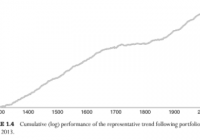Oracle Beats On Earnings, Ups Buyback: Tech ETFs In Focus
After the closing bell yesterday, tech bellwether Oracle (NYSE: ORCL ) reported mixed third-quarter fiscal 2016 results. The company beat the Zacks Consensus Estimate for earnings but missed on revenues due to negative currency translations and persistent weakness in traditional software sales. Additionally, Oracle boosted its share buyback program by $10 billion (see: all the Technology ETFs here ). Oracle Q3 Earnings in Focus Earnings per share came in at 59 cents (accounting for stock-based compensation), a penny ahead of the Zacks Consensus Estimate. Revenues declined 3.4% year over year to $9.01 billion and were below our $9.17 billion estimate. While the company’s long process of shifting to the Web-based cloud computing business is paying off, it is unlikely to make up for the decline in the software business. Additionally, a strong dollar is continuously posing challenges to the company’s performance. Excluding the impact of unfavorable currency rates, revenues would have grown 1%. Cloud software platform sales climbed 57% from the year-ago quarter and accounted for 6% of the total revenue. Notably, Oracle is selling more cloud software platforms than any other company in the world, providing it an edge over the software ace Salesforce.com Inc. (NYSE: CRM ). For the fiscal fourth quarter, the world’s largest database software maker expects revenues to be down 2% to up 1% in constant currency and earnings per share between 82 cents and 85 cents. The lower end of the earnings guidance is well above the Zacks Consensus Estimate of 78 cents, reflecting some optimism in the company’s future growth. Currency headwind is expected to impact 2% growth in revenues and dilute earnings per share by a couple of cents. Impressed by solid cloud computing growth and an earnings beat, the Board of Directors of Oracle authorized additional repurchase of as much as $10 billion of stock under its existing buyback program. As per Bloomberg, it is the first expansion of the repurchase plan since September 2014 (read: Face-Off: Dividend Growth & Buyback ETF ). As a result, Oracle shares climbed as much as 5.4% in after-hours trading. Smooth trading is expected to continue in the days ahead given that the stock has a Zacks Rank #3 (Hold) and a solid Industry Rank in the top 27%, suggesting room for upside. Given this, ETFs with the highest allocation to this software giant will be in focus in the days ahead. Investors should closely monitor the movement in these funds and avoid these if the stock drags them down: iShares North American Tech-Software ETF (NYSEARCA: IGV ) This ETF provides exposure to the software segment of the broader U.S. technology space by tracking the S&P North American Technology-Software Index. The fund holds a basket of 58 securities with Oracle taking the top spot at 9.3% of total assets. It is quite popular with AUM of $639.1 million while volume is moderate as it exchanges nearly 201,000 shares a day. The product charges 48 bps in annual fees and has lost 6.3% so far this year. IGV has a Zacks ETF Rank of 1 or ‘Strong’ rating with a High risk outlook. First Trust ISE Cloud Computing Index ETF (NASDAQ: SKYY ) This fund provides exposure to cloud computing securities by tracking the ISE Cloud Computing Index. Holding about 34 stocks in the basket, Oracle takes the fifth spot at 4.2% of assets. Software firms dominate this ETF, accounting for 37.5% share while Internet software services (16.7%) and communication equipment (13.5%) round off to the next two sectors. The product has been able to manage $531.3 million in its asset base while sees good volume of about 102,000 shares a day. It has 0.60% in expense ratio and has a Zacks ETF Rank of 2 or ‘Buy’ rating with a High risk outlook. First Trust NASDAQ Technology Dividend Index ETF (NASDAQ: TDIV ) This fund provides exposure to the dividend payers within the technology sector by tracking the Nasdaq Technology Dividend Index. The product has amassed about $482.9 million in its asset base while trades in volume of around 83,000 shares per day. The ETF charges 50 bps in annual fees. In total, the fund holds about 96 securities in its basket. Of these firms, ORCL takes the seventh position, making up roughly 4.0% of the assets. In terms of industrial exposure, the fund is widely spread out across semiconductor and semiconductor equipment, diversified telecommunication services, technology hardware, storage & peripherals, and software. The fund has added 3.2% so far this year. PureFunds ISE Big Data ETF ( BDAT ) This product targets the niche corner – the big data and analytics industry – in the broad technology space. The fund follows the ISE Big Data Index, holding 32 securities in its basket. Of these, ORCL takes the sixth spot with 4% allocation. The U.S. firms dominate the portfolio with 81% share while Germany, Israel, Canada, and China make up for a decent exposure. The fund has accumulated $1 million in its asset base so far and charges a bit higher fee of 0.75%. Average daily volume is paltry at nearly 1,000 shares and BDAT is down 13.8% in the year-to-date timeframe. Link to the original post on Zacks.com
